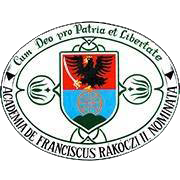Please use this identifier to cite or link to this item:
https://dspace.kmf.uz.ua/jspui/handle/123456789/3576| Title: | Hungarians and the Hungarian Language in Transcarpathia |
| Other Titles: | A magyarok és a magyar nyelv Kárpátalján Угорці й угорська мова на Закарпатті |
| Authors: | Csernicsko Istvan Csernicskó István Черничко Степан Hires-László Kornélia Гіреш-Ласлов Корнелія Karmacsi Zoltán Кормочі Золтан Márku Anita Марку Аніта Stefan Molnar D Molnár D. István Молнар Д. Стефан Máté Réka Матей Рейка Tóth-Orosz Enikő Товт-Орос Еніке |
| Keywords: | Transcarpathia;hungarian language;hungarian language in education;language rights |
| Issue Date: | 2023 |
| Publisher: | Termini Egyesület |
| Type: | dc.type.academicBook |
| Citation: | Csernicskó István, Hires-László Kornélia, Karmacsi Zoltán, Márku Anita, Molnár D. István, Máté Réka, Tóth-Orosz Enikő: Hungarians and the Hungarian language in Transcarpathia. Törökbálint, Termini Egyesület, 2023. 220 p. |
| Abstract: | Abstract. Since the treaties that ended World War I, that is, the document signed in Trianon in 1920, the border has played a decisive role in the discourses on Hungarian national identity, the concept of the nation and the nation in general. Indeed, once they are drawn, political boundaries inevitably begin to influence the language varieties spoken and written within and across the borders. As these administrative boundaries define the social networks of language speakers, it is natural that relations within the border become stronger and crossborder relations face some kind of obstacle and are therefore usually weakened. Thus, state borders are of a dual nature: they bring about convergence and divergence at the same time. The varieties within the border gradually begin to converge and evolve towards equalization, while in the varieties trapped on the other side of the border, special development intensifies (Palander–Riionheimo–Koisvisto 2018: 7). From the end of the 9th century to the beginning of the 20th century, the Hungarian language area belonged to one state. However, the 20th century brought significant changes in the history of the Hungarian language: this unified area was torn into several states after the First World War. Since Trianon, as a Hungarian linguist Sándor N. Szilágyi (2008: 106) has stated, “in the Carpathian Basin, the Hungarian language is not changing in a single country, but according to the current state of history, it is now changing in eight countries, and the change is influenced by different factors in each country” (see Map 2, 3). Since the end of the “Great War”, there have been no major Hungarian dialect regions whose territory does not extend beyond the borders of Hungary, but there are three (“Mezőségi”, Szekler and Moldavian) that do not cross the Hungarian borders (Kiss ed. 2001: Annex 5, Map 1), with linguistic consequences at all levels of the language. |
| Description: | https://hodinkaintezet.uz.ua/wp-content/uploads/2023/03/Hungarians-and-the-Hungarian-Language_2023.pdf https://opac3.brff.monguz.hu/hu/record/-/record/bibBRF00010497 |
| URI: | https://dspace.kmf.uz.ua/jspui/handle/123456789/3576 |
| ISBN: | 978-615-81834-8-2 |
| metadata.dc.rights.uri: | http://creativecommons.org/licenses/by-nc-nd/3.0/us/ |
| Appears in Collections: | Csernicskó István Hires-László Kornélia Karmacsi Zoltán Molnár D. István Márku Anita Máté Réka Tóth-Orosz Enikő |
Files in This Item:
| File | Description | Size | Format | |
|---|---|---|---|---|
| Csernicsko_I_et_al_Hungarians_and_the_Hungarian_Language_2023.pdf | Csernicskó István, Hires-László Kornélia, Karmacsi Zoltán, Márku Anita, Molnár D. István, Máté Réka, Tóth-Orosz Enikő: Hungarians and the Hungarian language in Transcarpathia. Termini Egyesület, Törökbálint, 2023. 220 p. | 10.6 MB | Adobe PDF | View/Open |
This item is licensed under a Creative Commons License





